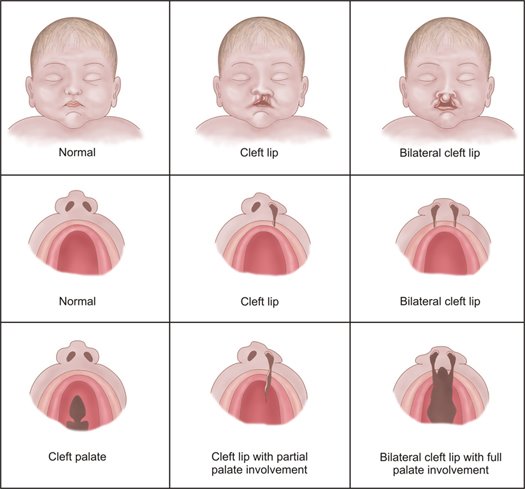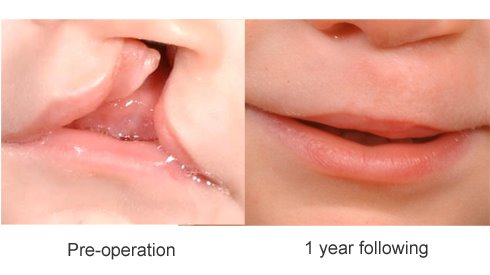http://libproxy.uncg.edu:2079/pubmed/18019810?ordinalpos=2&itool=EntrezSystem2.PEntrez.Pubmed.Pubmed_ResultsPanel.Pubmed_DefaultReportPanel.Pubmed_RVDocSum
This journal describes some of the different frequencies of cleft lip and palate between African American and Caucasian individuals. Among their genders and races, white males and black females were the most commonly affected. When separated by the different types of clefts however, these figures changed. White people are more likely to be afflicted with cleft lip and palate, whereas black people are more likelyto have just cleft palate. In both races, hard palate cleft occured the least often.
http://libproxy.uncg.edu:2079/pubmed/18812870?ordinalpos=5&itool=EntrezSystem2.PEntrez.Pubmed.Pubmed_ResultsPanel.Pubmed_DefaultReportPanel.Pubmed_RVDocSum
This journal explains the possibility of "growth disturbances" in the auricle of children with cleft lip and palate. While the study is only being proposed in this article, the experiment is well thought out. The auricles of 50 children (ages 5-18) with cleft lip and palate will be compared with the auricles of the control group, which will consist of 50 children of the same age group who are not afflicted with cleft lip and palate.
http://libproxy.uncg.edu:2079/pubmed/10064665?ordinalpos=1&itool=EntrezSystem2.PEntrez.Pubmed.Pubmed_ResultsPanel.Pubmed_DiscoveryPanel.Pubmed_Discovery_RA&linkpos=2&log$=relatedarticles&logdbfrom=pubmed
This study is interesting. Scientists interviewed mothers who had consumed alcohol one month before to three months after the conception of their children in an attempt to link the alcohol consumption with cleft lip and palate. Surprisingly, the women who did consume alcohol were not at an increased risk. Those who drank in excess however, had increased risks for delivering babies with isolated cleft lip (with or without cleft palate).
Monday, September 29, 2008
Subscribe to:
Posts (Atom)


